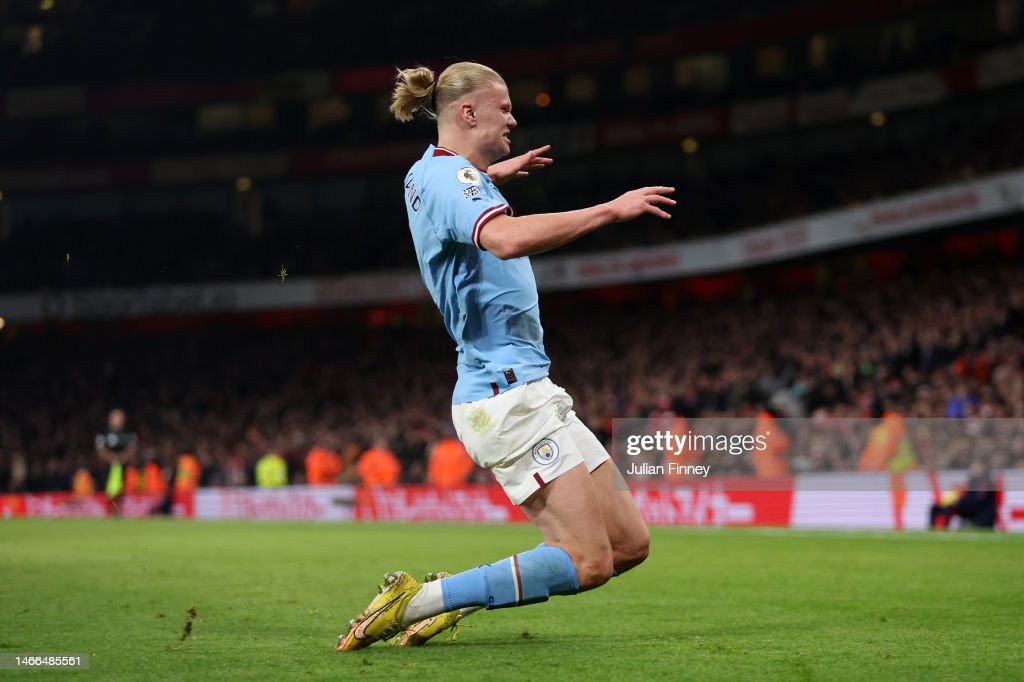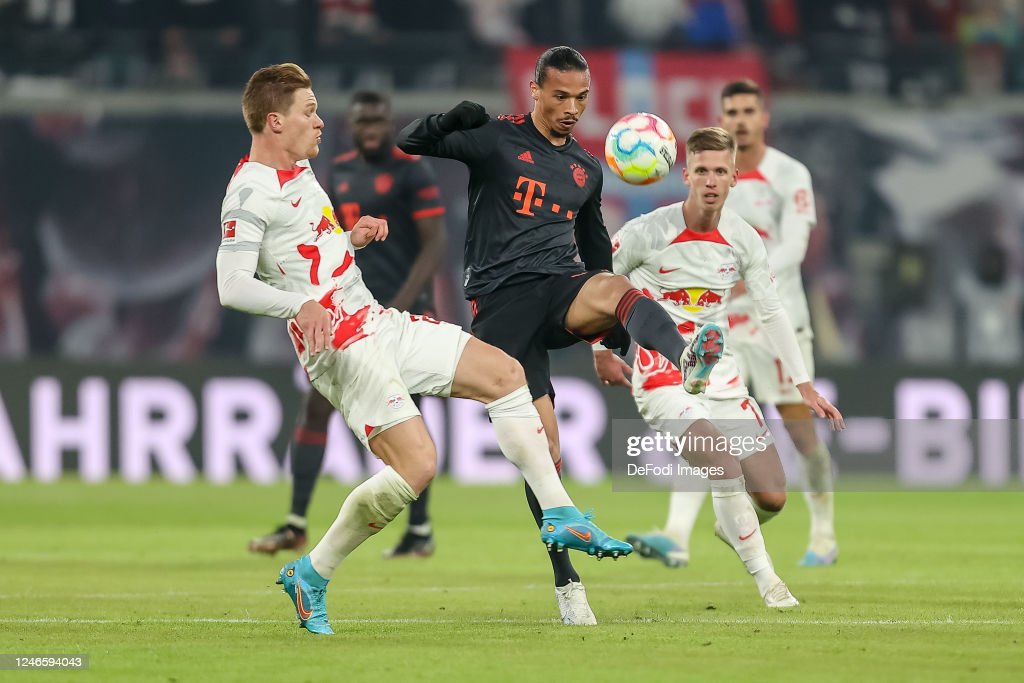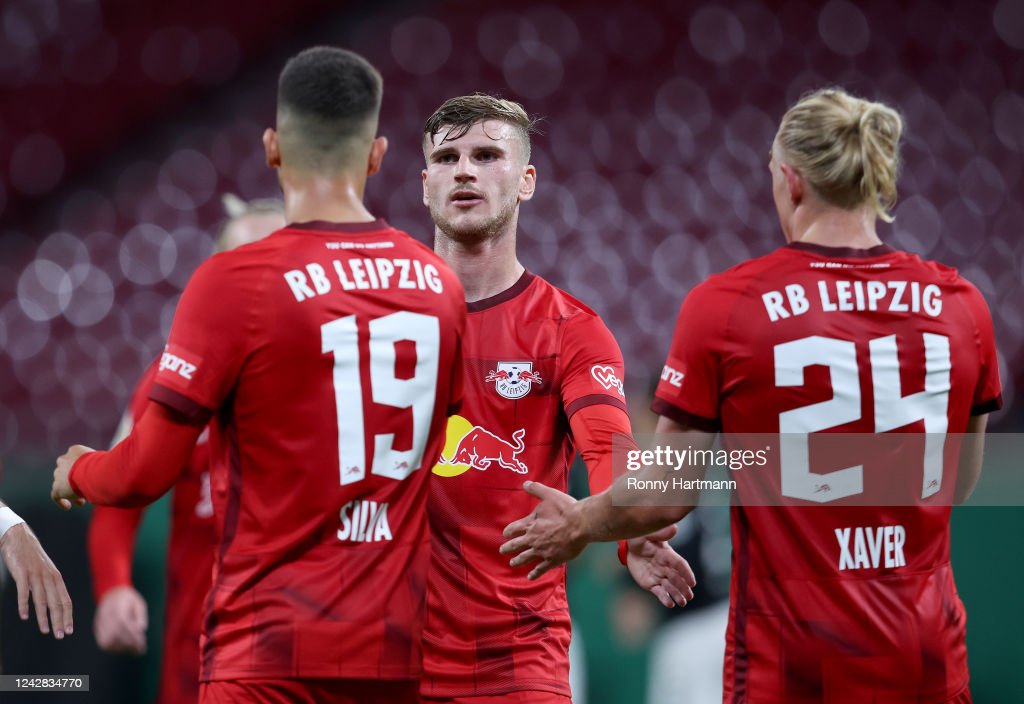Pep Guardiola is famous for frequently changing his formation and starting eleven and this season has been no different.
The Manchester City boss has brought in a new 3-2-4-1 formation and in doing so, has built a team that plays to the strengths of his players.
Erling Haaland is a great example of this. A world-class striker who is on his way to being a footballing icon appears to have found new heights under Guardiola; closing in on the Premier League goalscoring record.
This new formation will only help Haaland along his way, enabling Kevin De Bruyne to pick up small spaces in advanced positions where he then looks for the striker, inevitably making a move.
-
The dangers of City
This will be no different against an RB Leipzig side that will want to keep the ball and look to commit men forwards.
Since Marco Rose took over in September, the German side has scored 68 goals in 26 games at a rate of 2.6 goals per game. This means that Kevin De Bruyne will be able to find more space in RB Leipzig’s half making him more of a threat, as well as Riyad Mahrez and Jack Grealish who will be able to drive forward with the ball and play a bit more centrally. This allows the wingers to have a greater influence on the game, creating more chances for Haaland.
This was something that City struggled with at the start of the season as Haaland was the only player who was scoring goals. But by using this 3-2-4-1 formation, Guardiola is now getting more goals from Grealish, Mahrez and De Bruyne, who are able to get further forward.
Recently, against Premier League leaders Arsenal, Kevin De Bruyne was often further forward than Haaland which means he will also pose more of a goalscoring threat to RB Leipzig. However, this may suit the home side who, under Rose, does not have a formation that they use every single week. However, it is expected that they use a 4-2-3-1 as that is what Rose has used against the stronger teams who keep possession like Real Madrid and Bayern Munich.
When defending in this formation, Konrad Laimer will most likely lock onto De Bruyne to try and reduce his space to stop the through balls coming in behind Leipzig’s defence and stop the supply to Haaland, Grealish and Mahrez.

Leipzig has the defensive-minded full-backs to deal with the threat of City’s wingers. Both Mohammed Simakan and Marcel Halstenberg have heat maps showing them to be quite deep, with Simakan being very good at stopping the service to the winger.
In the UEFA Champions League, Simakan has faced some world-class wingers and has performed very well against them, showing brilliance against players such as Mykhailo Mudryk and Vinicius Junior. When Leipzig beat Real Madrid Simakan was brilliant, making four tackles, four interceptions and winning seven out of eight duels.
Therefore, the Frenchman will look to get tight to Grealish and stop the supply to Haaland in the middle of the park, as well as stopping Grealish from getting on the scoresheet. Whilst Simakan has a spot almost nailed on, the left-back position is slightly more up for contention.
Halstenberg has been good of late and was particularly impressive against Bayern Munich, after getting on the scoresheet.
-
How can Leipzig beat City?
Both David Raum and Halstenberg have had good seasons, but both also have different strengths. They both have similar defensive stats, around 1.5 tackles per game and 0.8 interceptions per game, however, Halstenberg plays a lot deeper and has better defensive positioning than Raum.
This could help defend the threat of Mahrez who is very good on one-on-one and likes to cut inside onto his favoured left foot. Furthermore, he may be able to deny some of the space at the back post which Haaland tends to get into.
The pair's similar defensive statistics may mean that Raum’s superiority when going forward could be preferred; Raum makes over one key pass per game, as well as making more passes per game with a higher percentage of those being in the opposition half. Raum has also created eight big chances, but Halstenberg has only created one.
However, despite a massive disparity in attacking output, Rose has looked to use Halstenberg due to having more defensive reliability and being more dependable. Against Manchester City, this will be vital against the threat of Mahrez. In order to stop the Algerian, the home side must get tight to him and stop him cutting inside. That is not something Raum can guarantee, as he may be caught out at the other end of the pitch.

Despite the obvious attacking threat that Manchester City poses, Leipzig does shave some attacking qualities of their own which will cause City some serious issues. An attack of Andre Silva, Timo Werner, Emile Forsberg, Dominik Szoboszlai as well as Christopher Nkunku who is just now returning from injury, are technically excellent and whilst only four of the five will play they will undoubtedly cause City issues.
Whilst Guardiola uses a 3-4-2-1 in attack the versatility of Nathan Ake and Kyle Walker makes this possible as Guardiola prefers a 4-4-2. As soon as the ball gets lost, the defence shuffles right, meaning Walker slips into the right-back position, with Ake centre-back.
By moving into a 4-4-2 formation, some of Leipzig’s attacking talent can pick up small spaces in between the defence and midfield. Then overloads can be created by bringing one of the full-backs and one of the midfielders forwards; by doing so, could create a 6 v 5 against Rodri and City’s back four.
Leipzig can then use the creativity of players like Szoboszlai and Forsberg to try and find the runs that Werner and Silva will make in behind. Playing Silva also means that Leipzig is not as one dimensional as he can win aerial duels, hold up the ball and play like a traditional centre forward.
He will most likely stand on Ake and hope to win flick-ons and 50-50s when his team are defending to allow them to get up the pitch quicker.

Despite being in a 4-2-3-1 formation, Leipzig does sometimes drop into a 4-3-3, pushing Werner up higher and more central meaning he can be between full back and centre back allowing him to run in behind. Then, Forsberg goes behind looking to link Silva and Werner with the rest of the team.
Forsberg will be able to sit in between defence and midfield, with the ability to try and play in Silva or Werner. In contrast, Szoboszlai will play deeper and in more of a midfield role so he can add more defensive support by tracking runs from players like Bernardo Silva and Ilkay Gundogan. This allows the more conventional holding midfielders to focus on stopping the supply to Haaland and the wingers as well as to allow Leipzig to be more compact when defending.
Then when Leipzig has the ball, Szoboszlai can use his technical ability and vision to play passes into the final third and break the lines by driving with the ball. This will make Leipzig more efficient in transition giving them more of a chance of getting a goal against this brilliant City team.










































